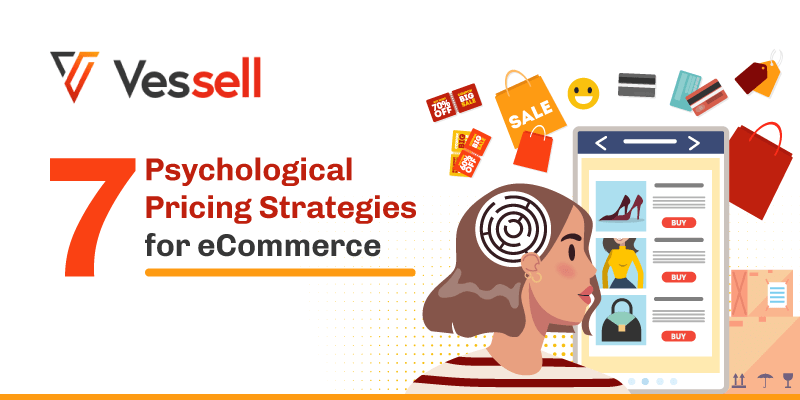
Do you ever wonder why retailers list prices like ₱49.99 instead of using the whole number ₱50? It’s a type of strategy called psychological pricing, and it’s been effective in influencing customers’ purchasing decisions, driving sales, and boosting brand visibility.
So what is psychological pricing, and how does it help your business grow?
What is Psychological Pricing?
Psychological pricing is a strategy retailers use to influence buyers to think that their products are cheaper yet valuable, encouraging them to purchase. In a way, it makes price tags more appealing to customers’ emotions rather than logic.
The example mentioned above is a common psychological pricing tactic called charm pricing. Listing a product as ₱49.99 makes buyers perceive it closer to ₱49 than ₱50, regardless of the one-cent difference. This perception becomes more pronounced when the .99 is smaller in print. As such, it makes customers believe they’re spending less than the product’s actual value.
Another widely used example is artificial time constraints. You often see merchants promoting sales with a large “One day only!” or “Get it now while supplies last!” print, implying a limited discount that buyers must take advantage of immediately. This urgency pressures customers who don’t want to miss the deal even though the sale isn’t necessarily limited.
Lastly, there’s also decoy pricing. Businesses utilize decoy pricing to guide customers toward a more tempting option by presenting a less enticing alternative.
Consider buying a beverage as an example. Many cafes offer a slight price difference between their medium and large sizes. They would emphasize that getting a large size would benefit you more for a small price bump.
This psychological pricing method might substantially assist businesses that provide multiple pricing plans. By offering a less desirable choice beside a more desirable alternative
Advantages and Disadvantages of Psychological Pricing
While this strategy seems like an excellent tool to drive more sales, some factors may impact your business for better or worse. Here are some benefits you can gain and drawbacks you must watch out for.
-
Advantages
Psychological pricing encourages customers to purchase, which can increase sales and revenue. It also improves profit margins, allowing retailers to charge slightly higher prices without discouraging customers from buying.
Moreover, psychological pricing can also capture your customers’ attention. Discount advertisements and promotions can boost brand visibility and awareness, translating to more sales. Lastly, this strategy gives businesses an edge over competitors, as a merchant selling a competitor’s $10 product for $9.99 may attract customers more effectively.
-
Disadvantages
On the other hand, overusing these strategies can cause customers to feel manipulated and deceived. This sentiment can tarnish your reputation as a business and entrepreneur. In turn, they’re less likely to return and may even go as far as to spread negative feedback about your brand among fellow buyers.
Also, some psychological pricing tactics may not work for specific customer segments, especially those highly stringent on budgeting. They will be extremely discerning about every cent they spend. So, charm pricing and other tactics may not be effective. While psychological pricing can be a powerful strategy, it’s crucial to use it sparingly and be aware of its possible impacts on your enterprise.
Real-World Examples of Psychological Pricing
Starbucks, one of the largest and most successful coffeehouses worldwide, implements psychological pricing in its menu. The brand offers products that are generally more expensive than its competitors. However, it doesn’t significantly impact its popularity among consumers. Many believe that a higher price means higher quality products, despite this not always being the case.
This strategy is called premium pricing, which may sound counterintuitive to maintaining competitive prices. But, premium pricing leverages consumers’ tendency to believe that products with a higher price have a higher value.
Meanwhile, Shopee, the dominating ecommerce platform in Southeast Asia, implements artificial time constraints to its pricing. The platform’s Flash Deals feature lets sellers add countdown timers to sales promotions. This strategy pressures shoppers to purchase immediately or otherwise lose the deal.
Boost Sales with Psychological Pricing
Psychological pricing is a double-edged sword. It’s a valuable tool to increase sales and brand awareness, but mishandling can result in losing your reputation and customer loyalty. As such, it’s important to brainstorm why you want to implement this tactic and how to do so effectively. That way, you can avoid letting your brand suffer any damages from negative feedback and ethical issues.
It is important to conduct A/B Testing and to monitor the effectiveness of different psychological pricing techniques to properly optimize pricing strategies for maximum impact.
Want to implement psychological pricing strategies for your business? Check out the infographic below to learn more about them.
